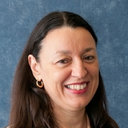ALS/FTLD: experimental models and reality.
Maneno muhimu
Kikemikali
Amyotrophic lateral sclerosis is characterised by a loss of upper and lower motor neurons and characteristic muscle weakness and wasting, the most common form being sporadic disease with neuronal inclusions containing the tar DNA-binding protein 43 (TDP-43). Frontotemporal lobar degeneration is characterised by atrophy of the frontal and/or temporal lobes, the most common clinical form being the behavioural variant, in which neuronal inclusions containing either TDP-43 or 3-repeat tau are most prevalent. Although the genetic mutations associated with these diseases have allowed various experimental models to be developed, the initial genetic forms identified remain the most common models employed to date. It is now known that these first models faithfully recapitulate only some aspects of these diseases and do not represent the majority of cases or the most common overlapping pathologies. Newer models targeting the main molecular pathologies are still rare and in some instances, lack significant aspects of the molecular pathology. However, these diseases are complex and multigenic, indicating that experimental models may need to be targeted to different disease aspects. This would allow information to be gleaned from a variety of different yet relevant models, each of which has the capacity to capture a certain aspect of the disease, and together will enable a more complete understanding of these complex and multi-layered diseases.


